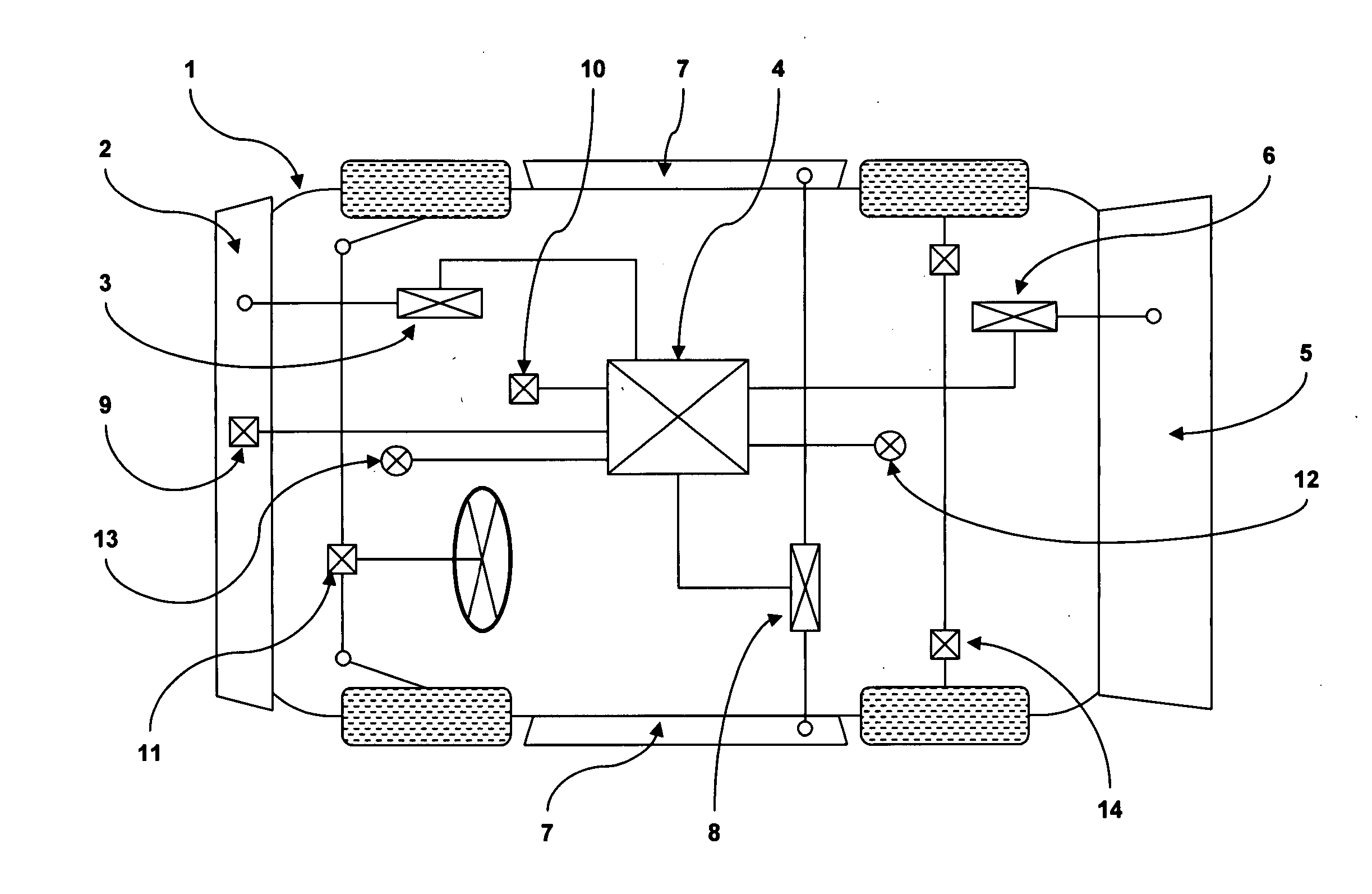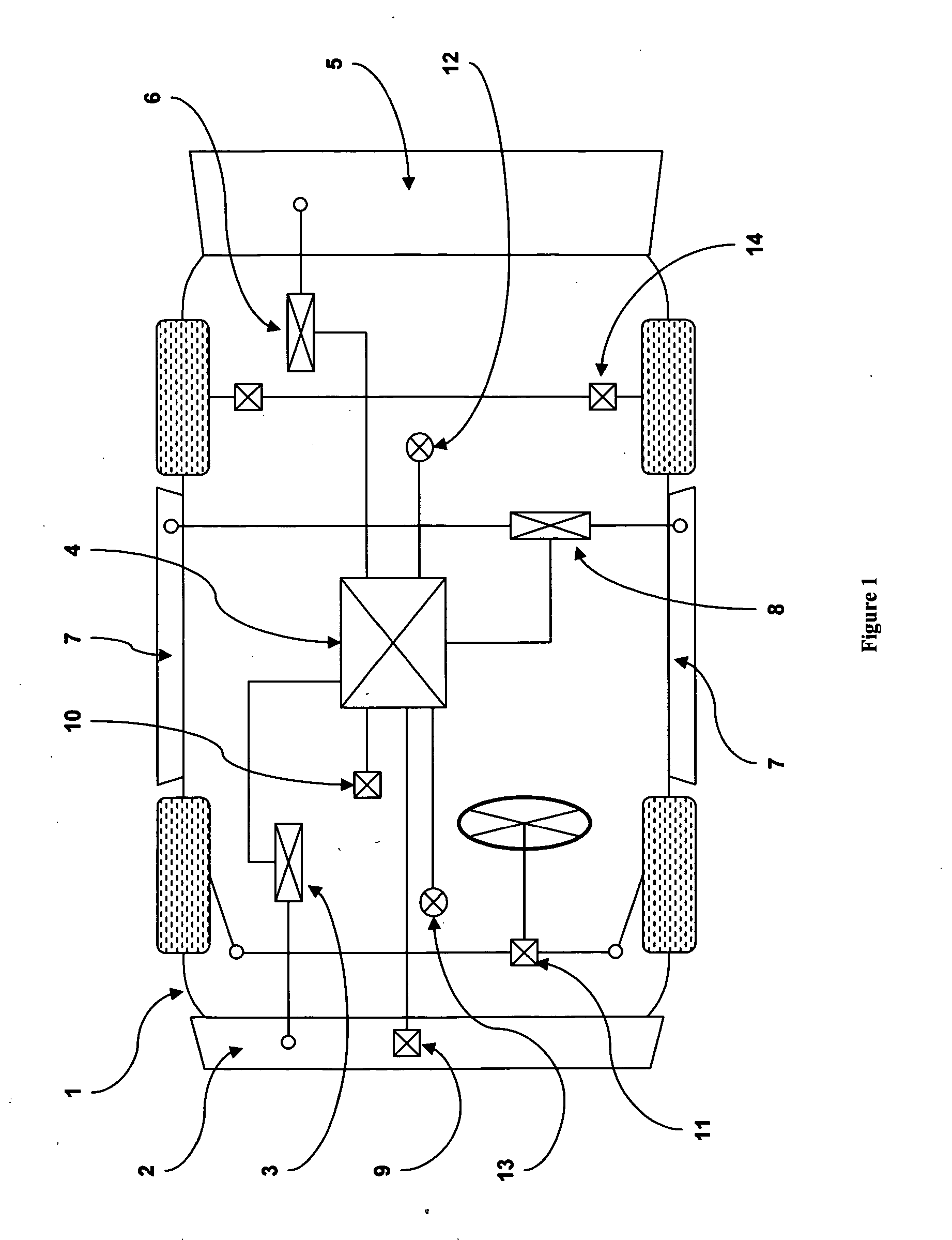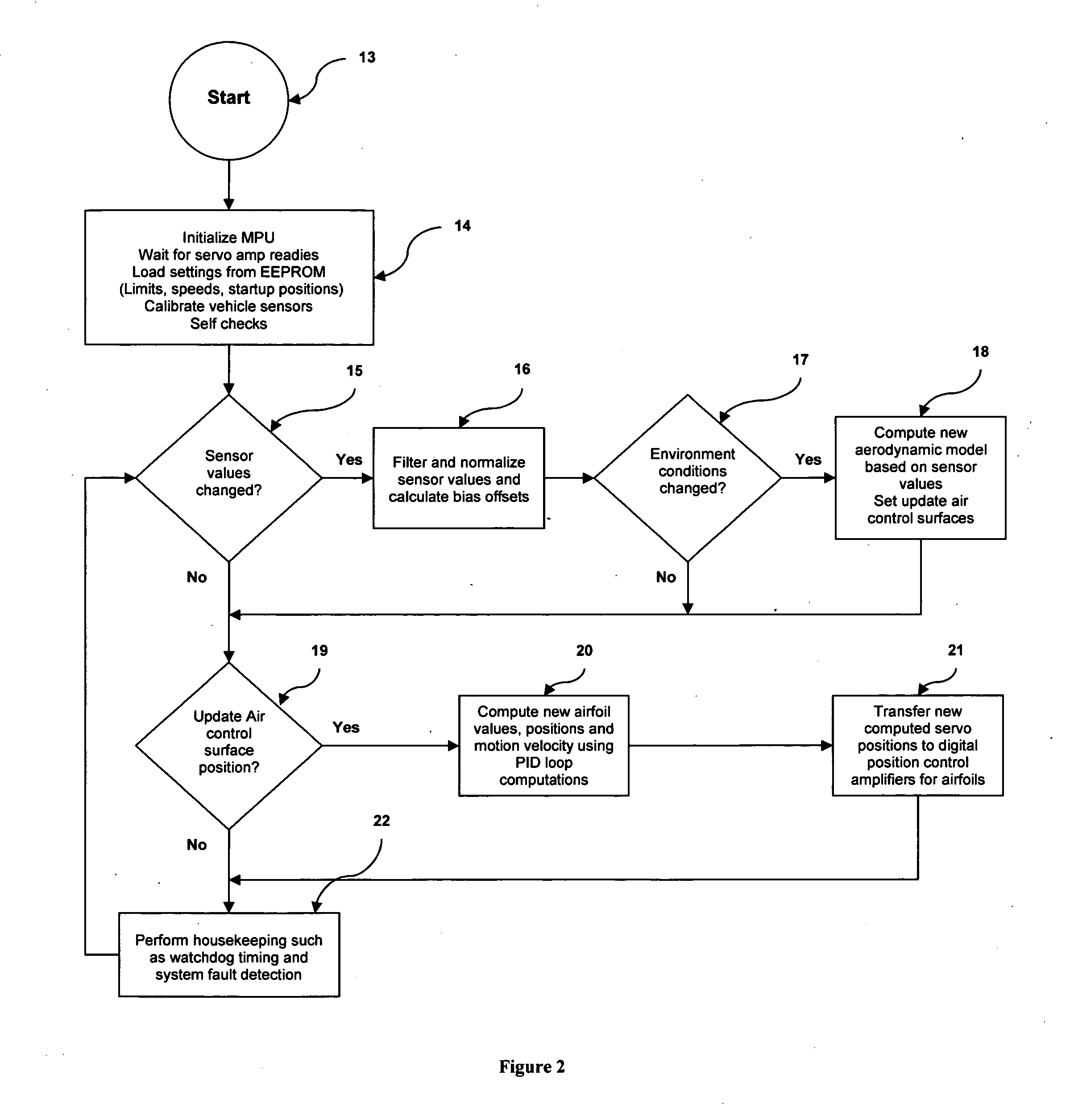Fuel efficient dynamic air dam system
a dynamic air dam and fuel-efficient technology, applied in the direction of roofs, transportation and packaging, vehicle arrangements, etc., can solve the problems of no devices, inventions or methods, etc., and achieve the effect of improving vehicle fuel efficiency and maintaining safe handling characteristics
- Summary
- Abstract
- Description
- Claims
- Application Information
AI Technical Summary
Benefits of technology
Problems solved by technology
Method used
Image
Examples
Embodiment Construction
[0026] The terminology used herein should be interpreted in its broadest reasonable manner, even though it is being utilized in conjunction with a detailed description of a certain specific preferred embodiment of the present invention. This is further emphasized below with respect to some particular terms used herein. Any terminology that the reader should interpret in any restricted manner will be overtly and specifically defined as such in this specification. The preferred embodiment of the present invention will now be described with reference to the accompanying drawings, wherein like reference characters designate like or similar parts throughout.
[0027] With initial reference to FIG. 1, an active microprocessor controlled aerodynamic system constructed in accordance with the teachings of the preferred embodiment of the present invention is generally identified with reference to the main Aerodynamic Control Unit identified with numeral 4. The Aerodynamic Control Unit 4 is show...
PUM
 Login to View More
Login to View More Abstract
Description
Claims
Application Information
 Login to View More
Login to View More - R&D
- Intellectual Property
- Life Sciences
- Materials
- Tech Scout
- Unparalleled Data Quality
- Higher Quality Content
- 60% Fewer Hallucinations
Browse by: Latest US Patents, China's latest patents, Technical Efficacy Thesaurus, Application Domain, Technology Topic, Popular Technical Reports.
© 2025 PatSnap. All rights reserved.Legal|Privacy policy|Modern Slavery Act Transparency Statement|Sitemap|About US| Contact US: help@patsnap.com



